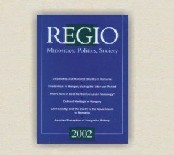Minorities and Nation Building Strategies: Central European Lessons for the Netherlands
Minorities and Nation Building Strategies: Central European Lessons for the Netherlands
Author(s): Peter van der ParreSubject(s): Social Sciences
Published by: MTA Társadalomtudományi Kutatóközpont Kisebbsegkutató Intézet
Keywords: Hungary; Hungarian minority; Netherlands; Romania; Slovakia
Summary/Abstract: Confronted with the nation-building program of a majority, minorities react in three different ways: assimilation; challenge; or migration. The Hungarians in Romania and Slovakia react in all three ways. Over the decades their number has decreased due to both assimilation and migration. Still their number is large enough and they live geographically concentrated enough and have a strong sense of solidarity directed towards preserving their culture and language that they challenge the nation-building programs of the Romanians and the Slovakians by their own Romanian-Hungarian and Slovakian-Hungarian nation-building programs. As the experiences of the Central and East European countries teach the Dutchs, oppression of collective identities can lead to assimilation, migration and the challenging of the majority, including the use of violence as well. It is important to understand the mechanism of nation building: the stronger the repression of the minority’s sense of its distinct identity, the more the result is a strengthening rather than a weakening of this awareness. At present, both the Dutch government as well as the kin-state governments are still acting more or less on the assumption that the immigrants will assimilate. It is debatable whether this assumption will prove to be correct for the children of the numerous and rather concentrated immigrant groups of a Turkish and Moroccan origin.
Journal: Regio - Minorities, Politics, Society - English Edition
- Issue Year: VII/2004
- Issue No: 1
- Page Range: 88-112
- Page Count: 25
- Language: English

